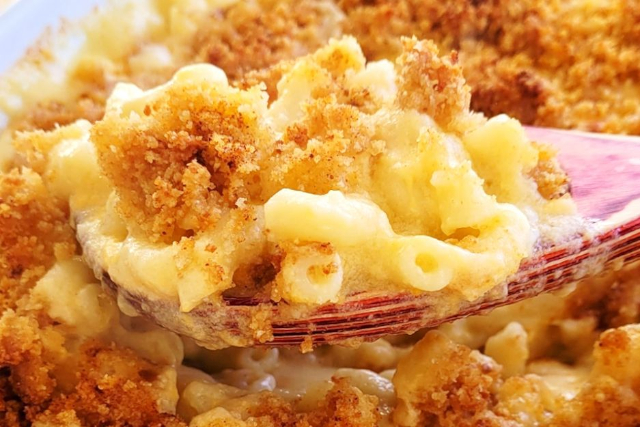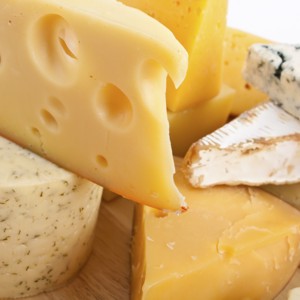I love Cheese. And I can’t resist any post that claims to offer facts (or fictions) I didn’t already know about the world’s most sublime dairy product. So I was all-in for Cheese: The Complete Beginner’s Guide. Then, MSN deleted it on me!
 Mac & Cheese: The most popular cheese dish in America!
Mac & Cheese: The most popular cheese dish in America!
Followed closely by the Grilled Cheese Sandwich…
Nevertheless… Sister Erin had the foresight to print it off when She first encountered it. So you might say I’m resurrecting it – along with additional Choice Cheese Facts that popped up during my subsequent browsing…
A little background
I’ve posted previously about cheese – but never a comprehensive look at this uniquely delicious, generously nutritious comfort food. It’s time to remedy that oversight!
Cheese is ancient
Cheese has been around for at least 10,000 years. Scholars can’t agree on where it first appeared. But they contend it was either Europe, Central Asia or the Middle East.
Many kinds of milk are used
The main differentiator between cheese is the type of milk from which they’re made. Sheep’s milk was the first, according to archeologists. Then came goats and Asian buffalo. And finally, cow’s milk, from which the vast majority of cheese is made today. Cheese is even made from Yak’s milk in Siberia!
The best milk for cheese making is high-fat whole milk.
How it’s made
All cheese is made in basically the same way. Milk is dosed with a bacterial culture which separates the curds from the whey. The whey is drained off and used in animal feed, or as the feedstock for chemical processes that extract various useful compounds. The curd is cut, drained further, and then (usually) pressed into cylindrical or rectangular molds. At this point, the newly pressed cheese may take any of hundreds of different paths to maturity – depending on the type of cheese being made.
How much milk does it take?
It takes about 10 lb. / 4.54 kg of whole milk to make 1 lb. / 454 g of cheese. That varies, of course, depending on the kind of milk you’re using, specifically its fat and milk solids content.
How many types?
Cheese is a central component of virtually all culinary cultures around the world. There are at least 2,000 known and recognised varieties. Many more, if you take into account all the variations on those classic types.
Now, the ‘fun’ facts…
‘American Cheese’ is ‘processed’ cheese
And it’s not all cheese, either. Cheddar Cheese ends, trimmings and packages retured from stores are melted down, and blended with vegetable oil and milk solids. Colouring is added to ensure every slice looks exactly the same. Other additives and preservatives are also added, to extend shelf life and maintain the product’s texture and appearance.
Cheddar Cheese is not naturally yellow
Not naturally, anyway. It’s really an ivory colour, the same as the milk it’s made from. But a special ‘cheese colour’, called annatto, is often added to produce the bright yellow-orange hue we’re used to. That’s strictly a marketing ploy, to help you differentiate Cheddar from other cheeses at a glance.
Serve at room temperature
Though most cheeses are best stored in he fridge or in a cellar, they should be left out to come to room temperature before serving. This allows they to express their full flavour and delicate texture. get everything you paid for when you bought the stuff!
Keep cheese wrapped
There are many reasons. First, any cheese will dry out if left unwrapped. Cheese will also oxidize – soft cheeses are especially susceptible. Mouldy (‘Bleu’) cheeses scatter bacterial spores that can invade other foods – not just other cheeses. By the same token, cheese may absorb aromas or flavours from other foods in the fridge, ruining it.
Why does Swiss Cheese have holes?
That comes all the way back to the first stage of cheese making. The bacteria that separate the curds and whey are actually fermenting the milk. And certain types of fermentation can produce gas bubbles. So it is with Swiss. For the record: Swiss Cheese is properly called Emmental. But any cheese with holes that’s made by the same process is called ‘Swiss’-style.
Why do some cheeses taste or smell ‘strong’?
That’s is another effect of fermentation. Byproducts of the process impart characteristic aromas and flavours to cheese depending on the bacterial culture used.
A fount of nutritional and health goodies
Cheese is packed with protein, vitamins and minerals. The leading players are: milk protein, vitamin B12, vitamin A, calcium and phosphorus.
Cheese is also recognised as a beneficial food that can help lower the risk of cardiovascular disease and type-2 diabetes. In spite of previous claims that cheese was a dietary cholesterol bomb, science now says there’s no correlation between dietary cholesterol and blood cholesterol. In fact, some authorities say that cheese fermented with probiotics can help control blood cholesterol.
Biggest cheese ever
The biggest cheese ever made was produced by a Canadian cheese maker. It weighed a mammoth 57,518 lb. / 26,144 kg, and was 32 ft. / 9.75 m long. Some 540,000 lb. / 245,454 kg of milk was needed to make it. By comparison, the next-largest cheese was made in Wisconsin in 1964, and weighed a mere 34,591 lb. / 15,723 kg.
A royal gesture
Queen Victoria received a huge wheel of Cheddar Cheese as a wedding present. It was a gift from the dairy farmers and cheese makers of the English Midlands. And it weighed 1,000 lb. / 454 kg.
What do they call cheese lovers?
“Are you stuck on Stilton or gaga for Gouda? Do you crave Camembert? If so, you just might be a turophile, the ultimate cheese lover.” So teases Merriam-Webster.com. ‘Turophile’ is a combination ‘tyros’, the greek word for ‘cheese’, and ‘philos’, meaning ‘loving’.
My take
That’s just a smattering of the fun and fascinating facts about ‘cheese’ you can access just by Googling that one key word… And I never tire of learning more!
~ Maggie J.

